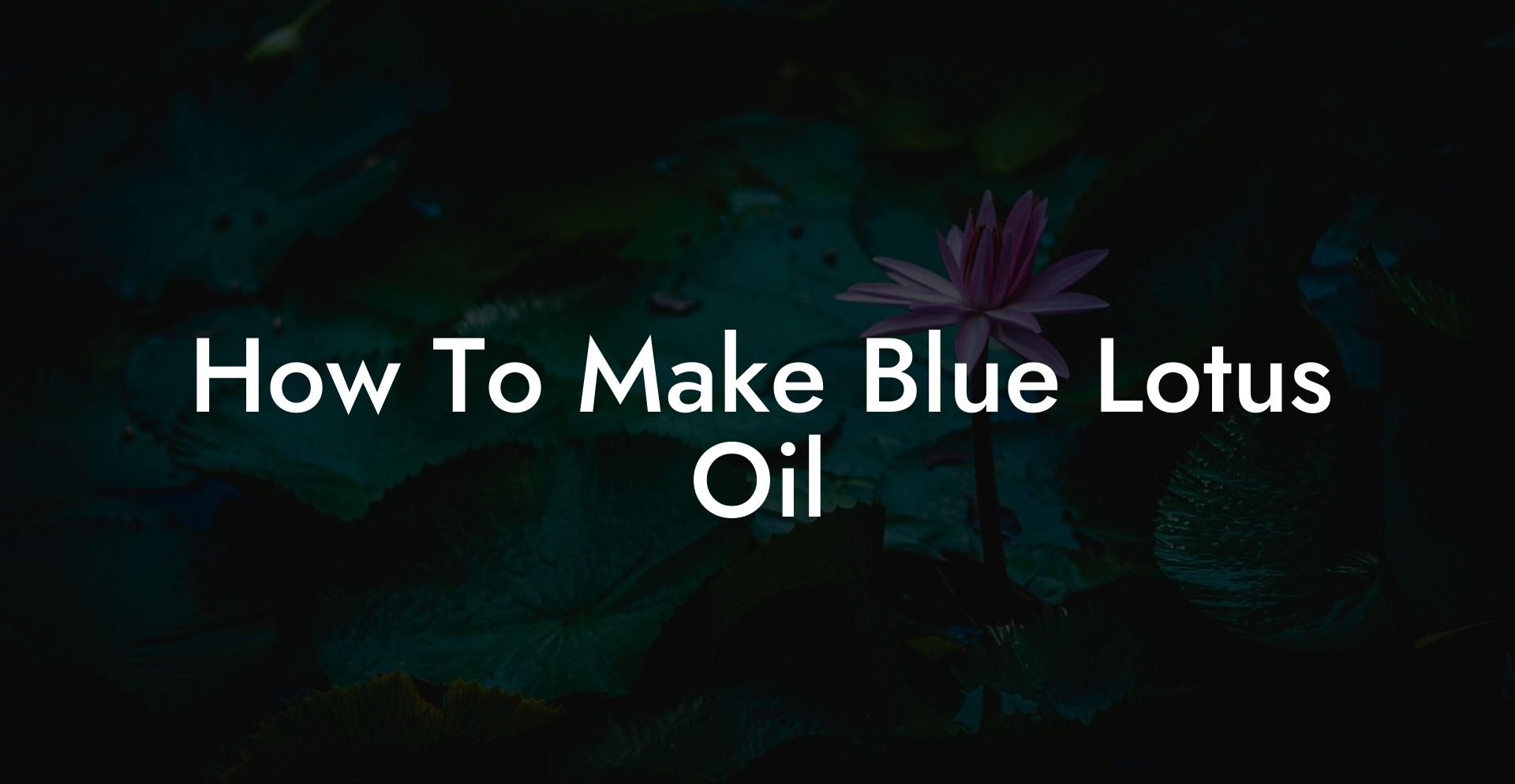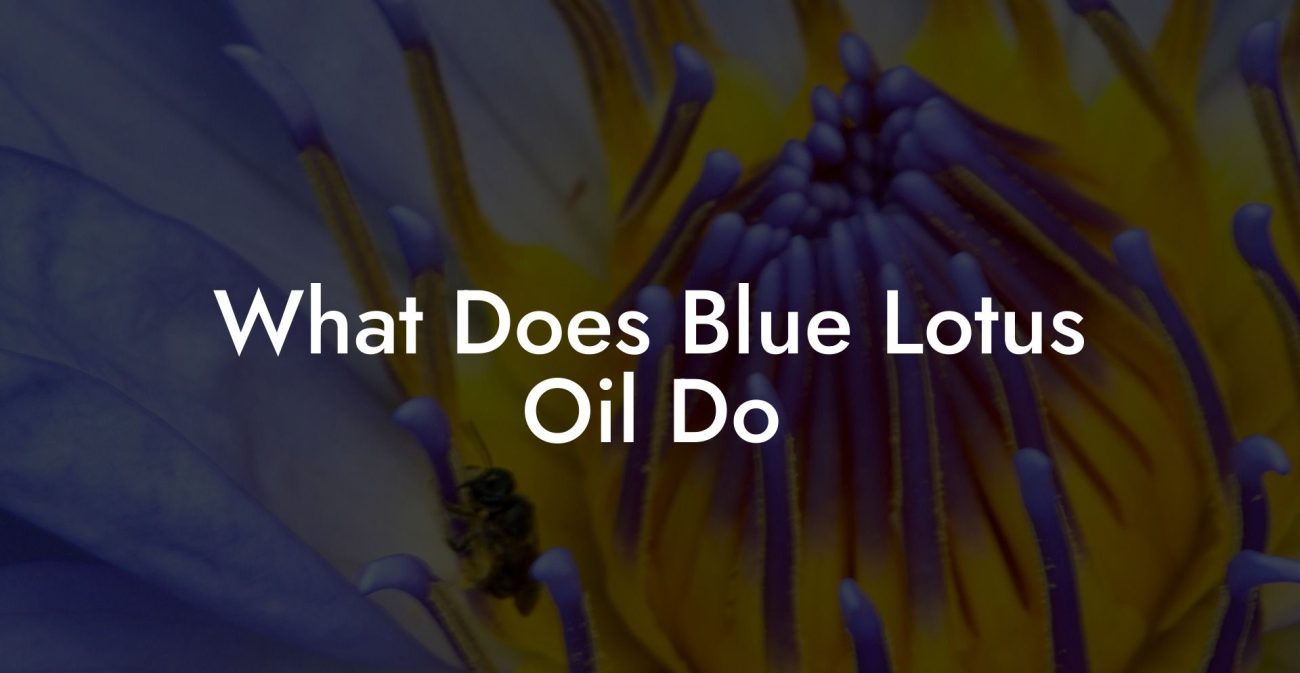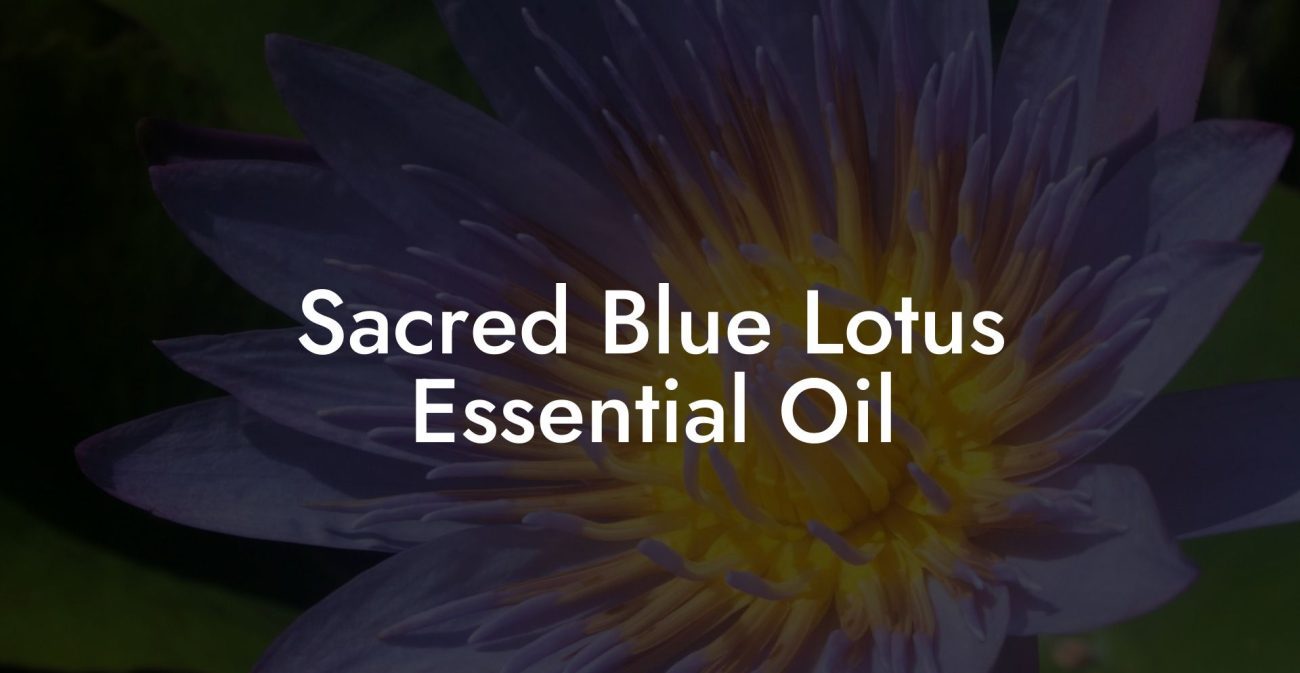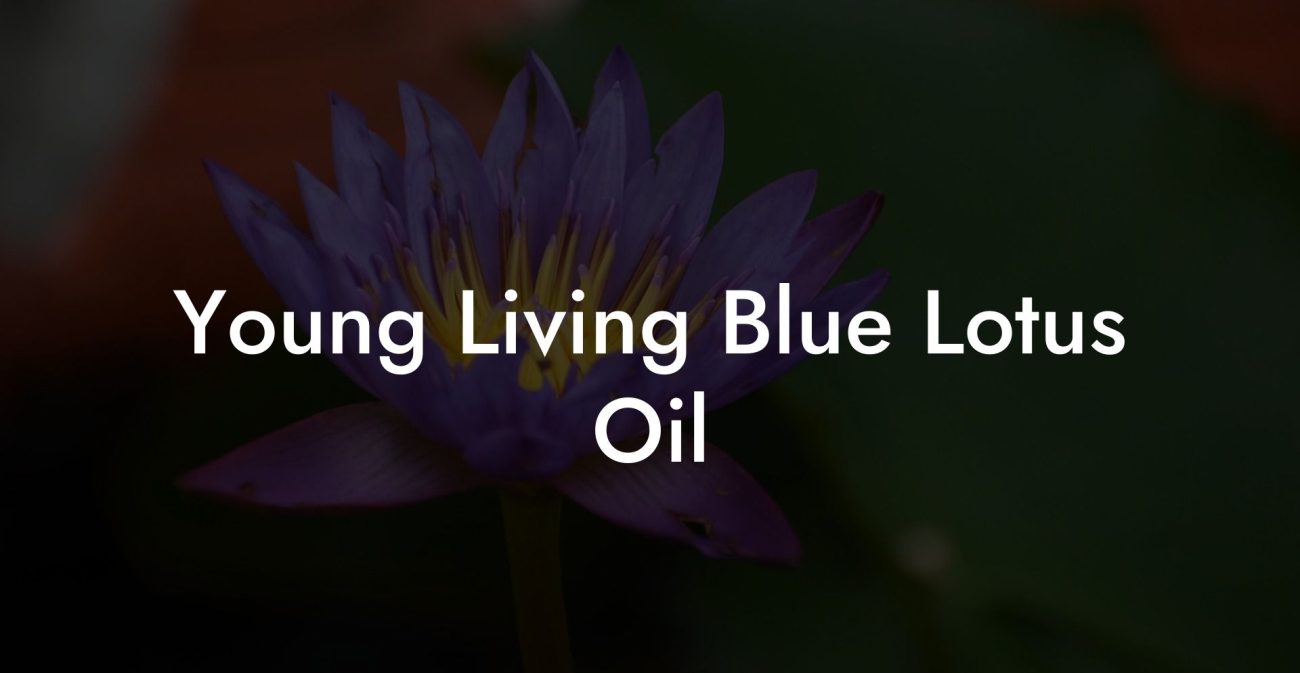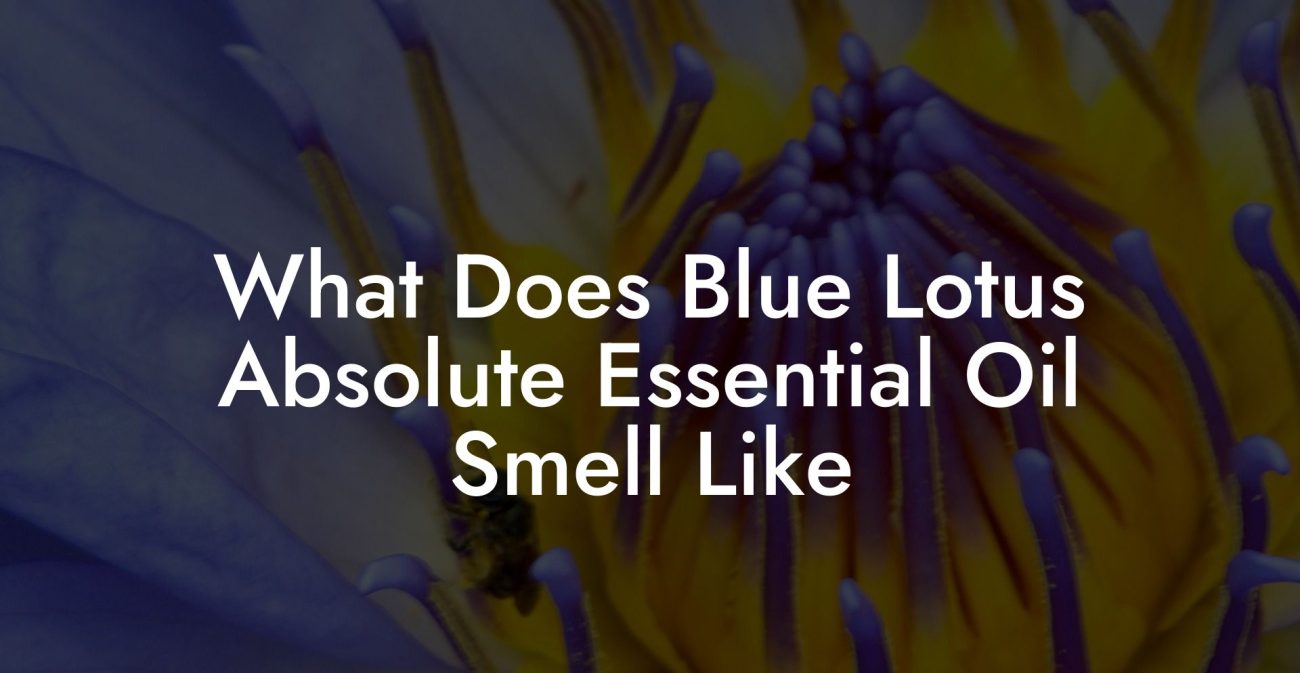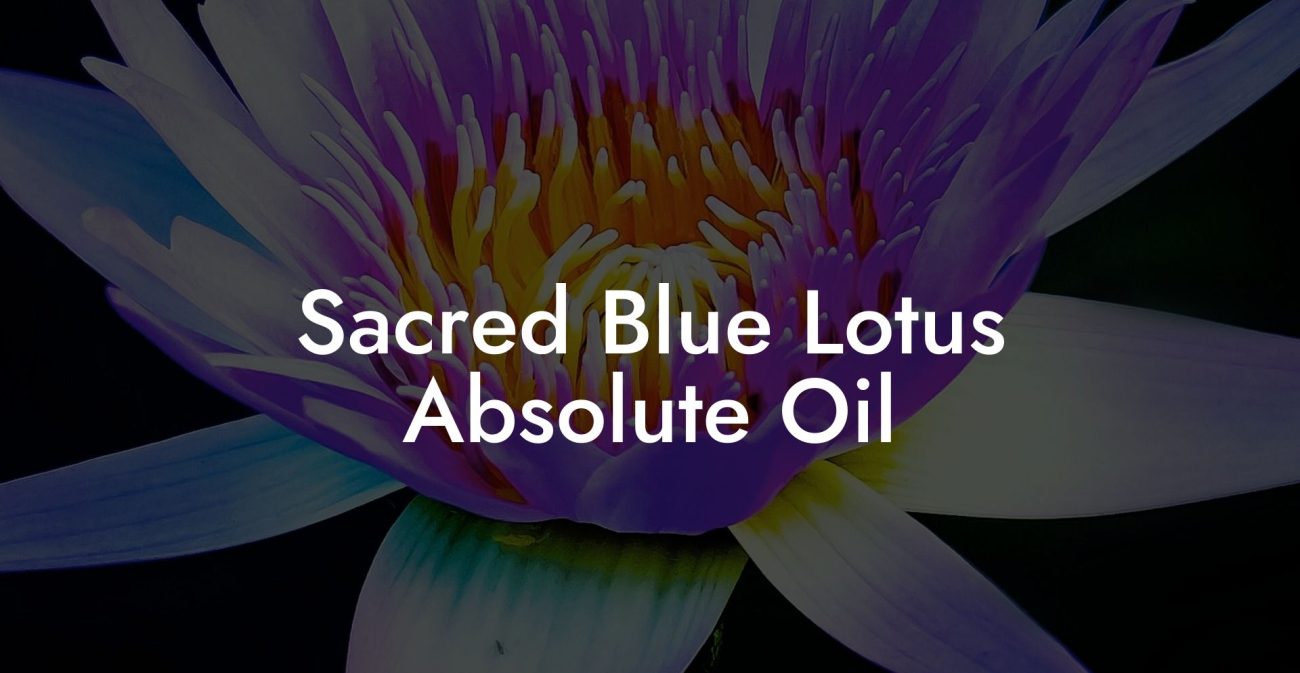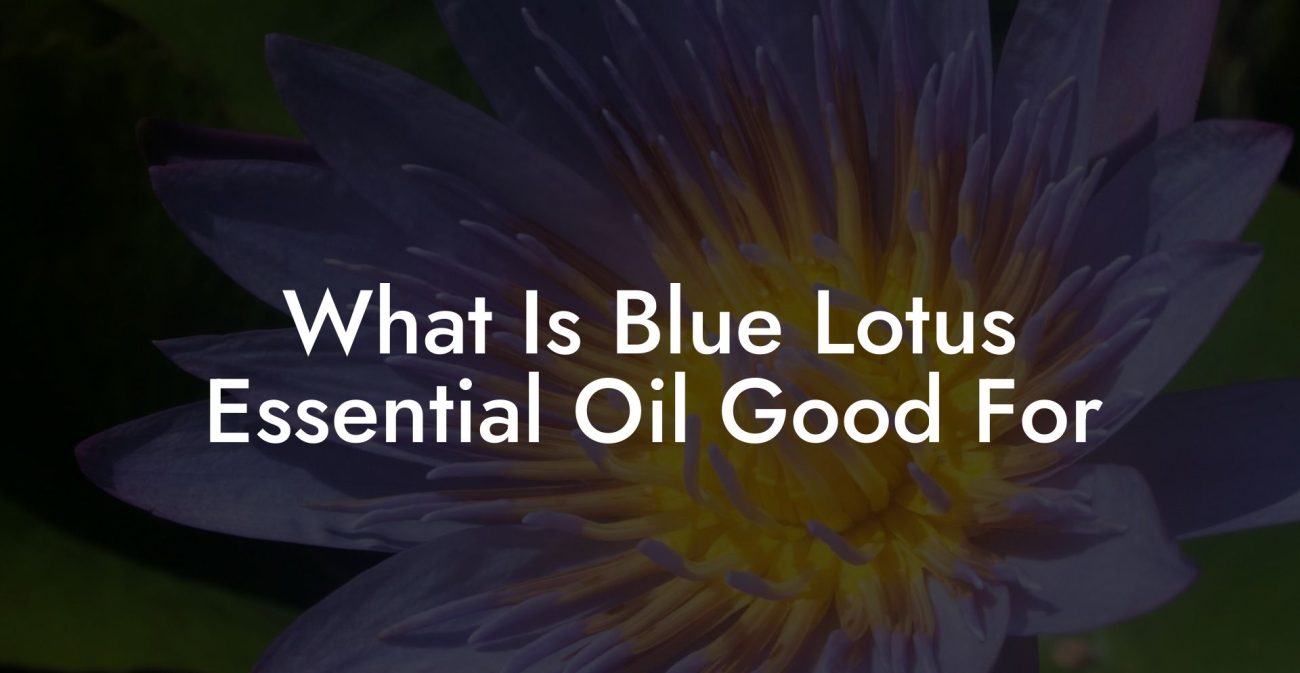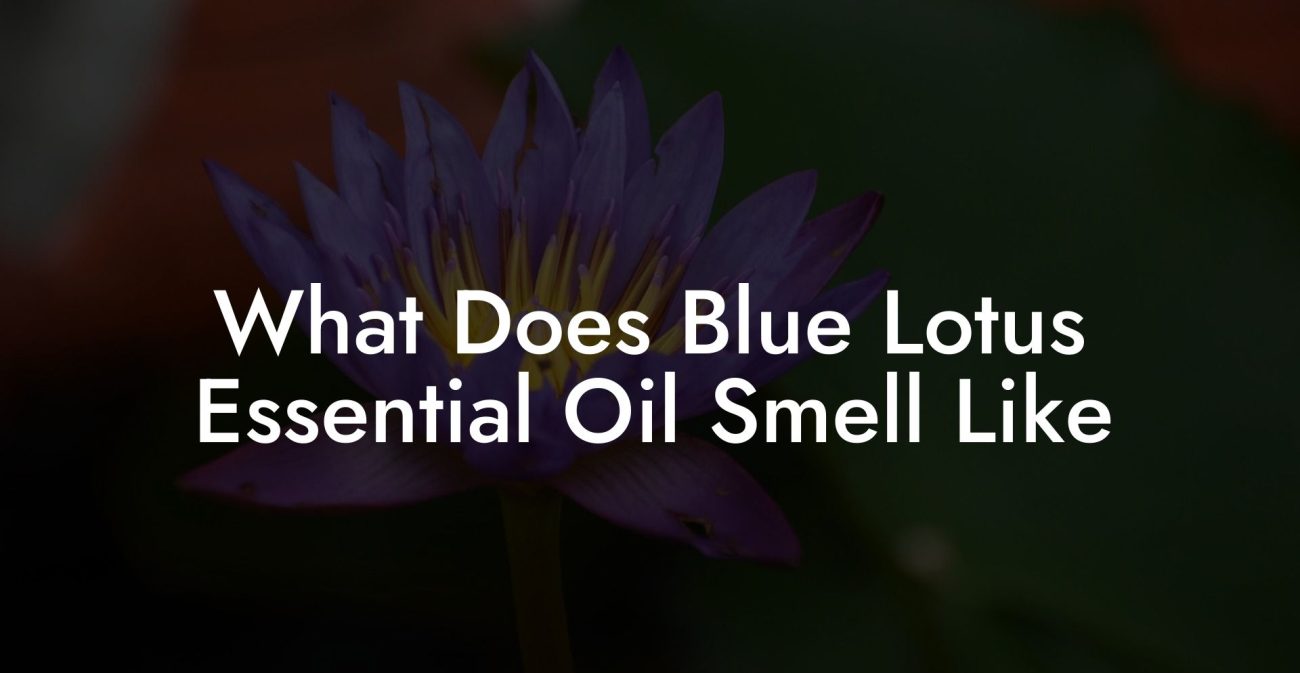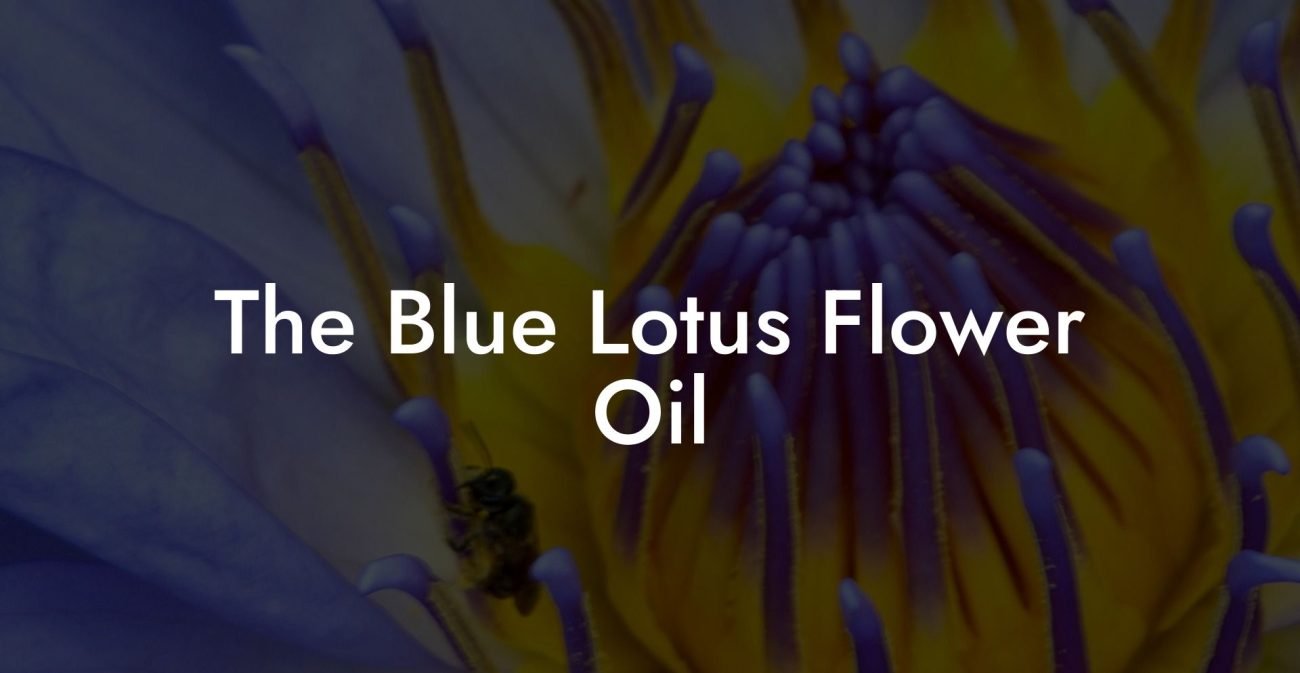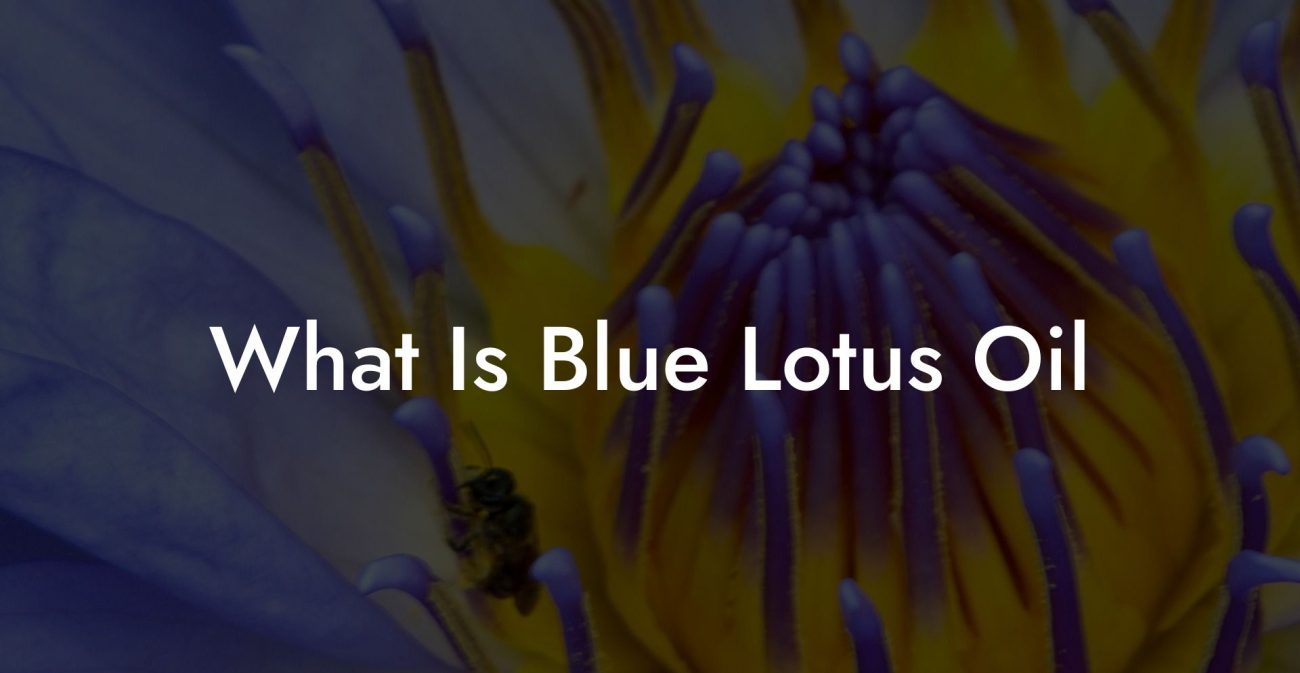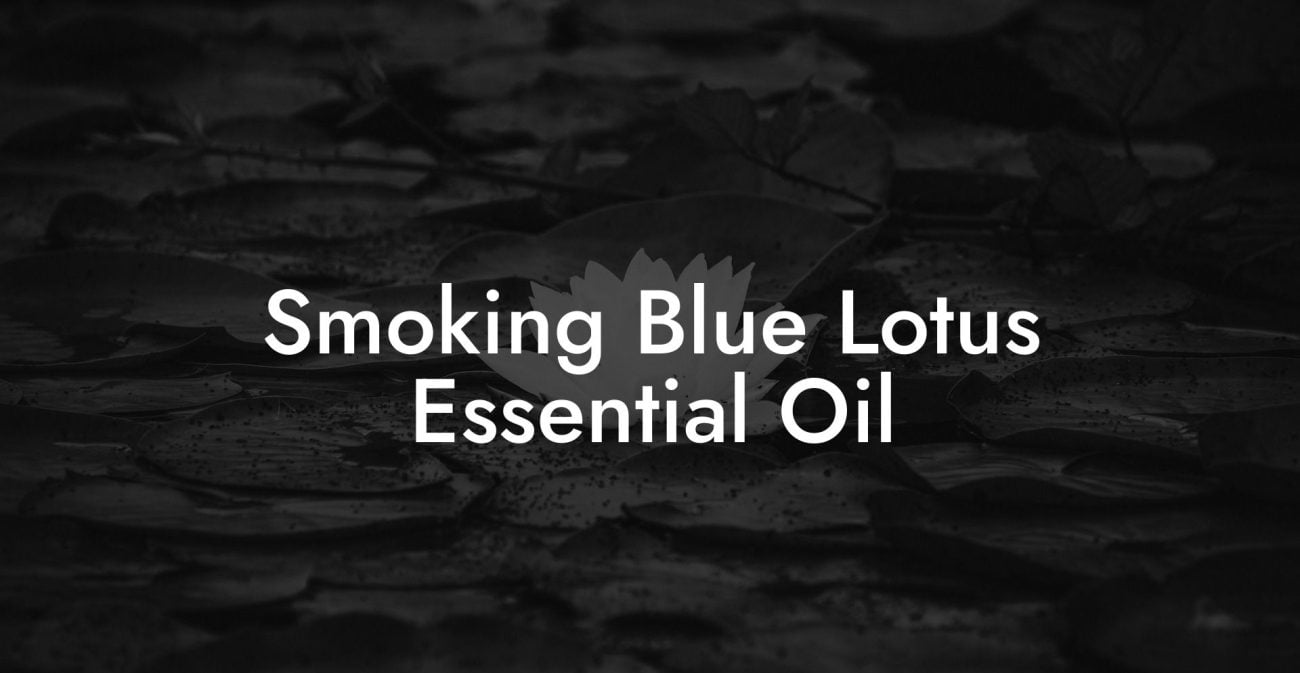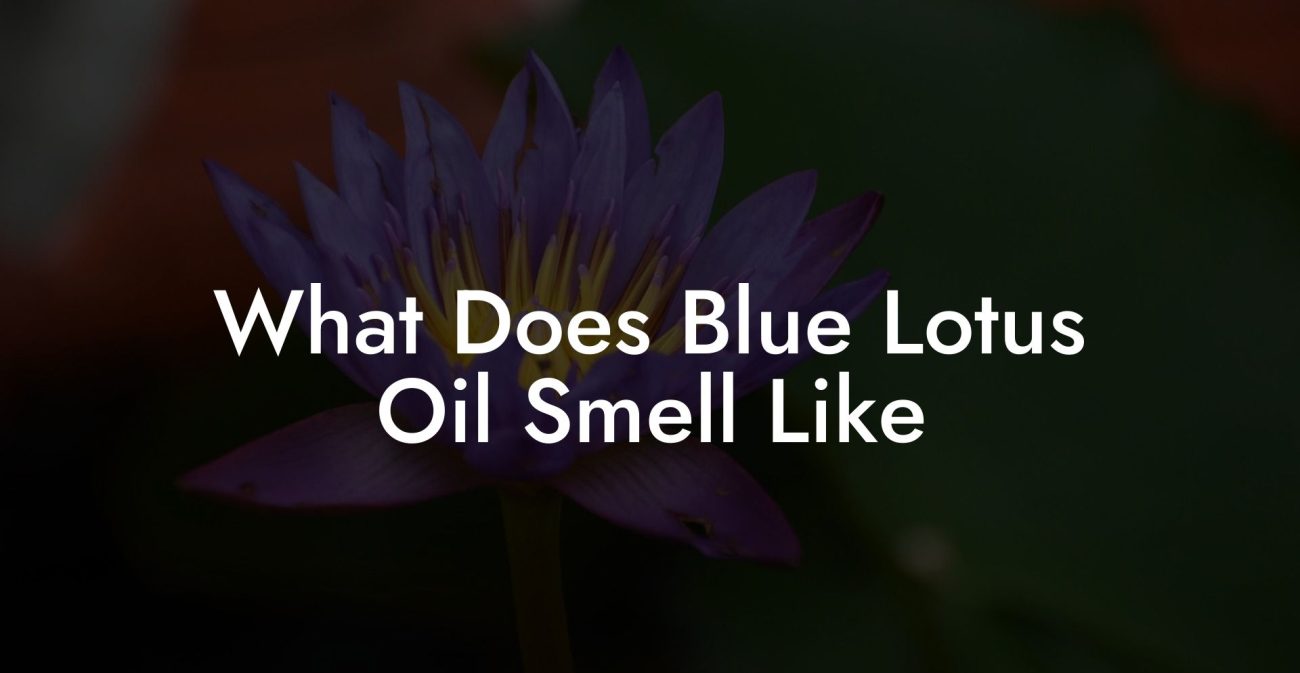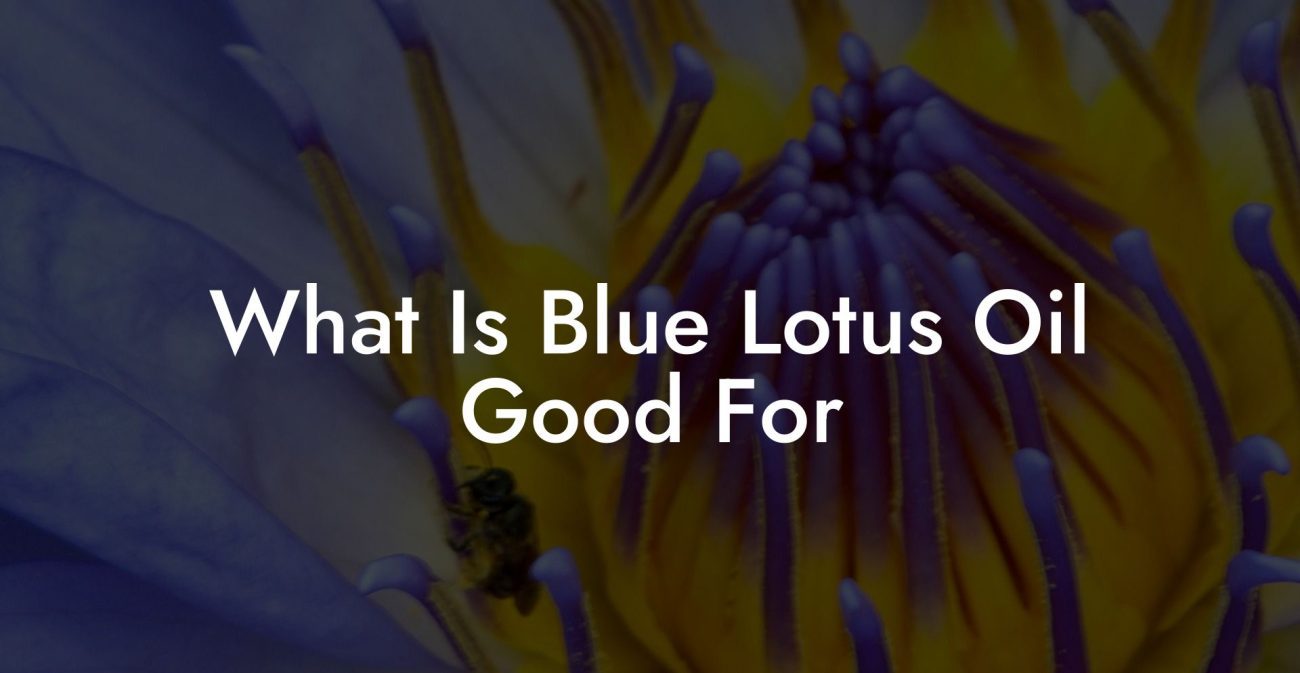Instant Answer
To make Blue Lotus Oil, infuse dried blue lotus petals in a carrier oil, like jojoba or almond oil, for 2-3 weeks, shaking the jar occasionally to enhance infusion.
For those seeking the finest, most authentic Blue Lotus Oil, experience our hand-crafted, pure Luxury Egyptian Blue Lotus Oil for a truly luxurious addition to your wellness routine. Find out more →
Blue Lotus Oil, derived from the sacred Nymphaea caerulea flower, has captivated users for centuries with its unique benefits and enchanting aroma. Known for its calming and mildly euphoric properties, Blue Lotus Oil was once cherished in ancient Egyptian rituals, symbolising renewal, relaxation, and spiritual awareness. Today, it’s increasingly popular for its versatility in skincare, aromatherapy, and meditation practices.
Making Blue Lotus Oil at home allows you to capture the flower’s natural benefits in a personalised, high-quality infusion. Unlike mass-produced versions, a DIY approach provides control over the ingredients and process, resulting in a more potent and customised oil. This article will guide you through sourcing the right materials, the step-by-step infusion process, and tips for storage, so you can enjoy the full potential of this ancient oil in your daily routine.
Understanding Blue Lotus Oil: Infusion vs. Essential Oil
When creating Blue Lotus Oil, it’s important to know the difference between an infusion and a pure essential oil:
Infusion
Method: Dried Blue Lotus petals are steeped in a carrier oil (e.g., jojoba, almond) for several weeks, allowing the carrier oil to absorb the flower’s natural compounds gradually.
Benefits: Infused Blue Lotus Oil is gentle, versatile, and easy to make at home. While less concentrated, it retains enough of the flower’s aroma and benefits to be effective in skincare, massage, and aromatherapy.
Essential Oil
Method: Created via steam distillation, which separates and collects the concentrated aromatic compounds from the Blue Lotus petals. This complex process typically requires advanced equipment and professional settings.
Benefits: Pure Blue Lotus Essential Oil is highly concentrated, providing the maximum therapeutic benefits of the flower in a single drop. However, it’s rare and costly, often available only from specialised suppliers.
For DIY enthusiasts, an infusion offers a practical, safe, and potent option that captures the calming and skin-enhancing qualities of Blue Lotus without the need for professional tools. This guide focuses on creating a Blue Lotus infusion, giving you an accessible method to enjoy this revered flower in your wellness routines.
Sourcing High-Quality Blue Lotus Flowers
To make a potent DIY Blue Lotus Oil, sourcing premium-quality flowers is crucial. Here’s a comprehensive guide to help:
- Ensure Botanical Authenticity
- Importance: The true Blue Lotus, Nymphaea caerulea, offers specific calming and skin-beneficial properties. Other flowers may be visually similar but lack these unique compounds.
- Tip: Purchase from sellers who specify “Egyptian Blue Lotus” and list Nymphaea caerulea as the botanical name. Trusted sources will clarify the flower’s origin, ideally from Egypt.
- Opt for Organic, Wildcrafted, or Pesticide-Free
- Why It Matters: Flowers treated with chemicals can interfere with your oil’s purity and therapeutic effects.
- Tip: Seek out organic or wild-harvested petals, certified by known organisations such as the Soil Association or USDA Organic. Ask suppliers about their drying processes, as improper drying can diminish potency.
- Choose High-Quality Dried Flowers
- Quality Indicators: High-quality dried Blue Lotus petals retain a vibrant blue-purple hue, a fresh aroma, and soft, pliable petals.
- Buying Advice: Avoid overly brittle or brownish flowers, as these may be older stock that’s lost its active compounds.
- Source from Reputable Specialty Suppliers
- Where to Look: Trusted botanical suppliers, herbal apothecaries, and specialised online retailers known for ethical sourcing (e.g., Starwest Botanicals or Mountain Rose Herbs).
- Tips: Read reviews to confirm quality and customer satisfaction, and look for suppliers who provide transparency on sourcing, sustainability, and testing.
Tools and Ingredients Needed
Creating potent Blue Lotus Oil requires careful selection of tools and ingredients. Here’s what you’ll need and how to get the most out of each:
Carrier Oil Selection
Best Choices: Use a light, stable oil such as jojoba (mimics skin oils), grapeseed (quick absorption, ideal for oily skin), or sweet almond (gentle, great for sensitive skin).
Pro Tip: Avoid oils with strong scents (like coconut), which can overpower the Blue Lotus aroma.
Dried Blue Lotus Flowers
Key Indicators: High-quality petals are vibrant blue or purple with a light floral aroma. Look for certified organic or wildcrafted petals to ensure purity and potency.
Where to Source: Trusted botanical suppliers or organic apothecaries often provide the highest quality.
Wide-Mouth Glass Jar
Why: Allows for easy addition, stirring, and straining, helping the petals infuse evenly. Use dark amber or cobalt glass to limit light exposure.
Tip: If you only have clear glass, wrap the jar in a cloth to protect it from sunlight.
Cheesecloth or Fine Mesh Strainer
Purpose: For smooth, particle-free oil, strain with a double layer of cheesecloth. This captures fine particles that can alter the oil’s texture.
Tip: Squeeze gently on the flowers through the cloth to get every last drop of infused oil.
Dark Glass Storage Bottles
Why: Dark glass bottles preserve the oil’s quality by blocking light. Dropper bottles are ideal for easy, mess-free application.
Pro Tip: Label each bottle with the preparation date to track freshness.
With these carefully selected tools and ingredients, your DIY Blue Lotus Oil will retain its full aromatic and therapeutic potential, ensuring a high-quality product tailored to your wellness needs.
DIY Infusion Method: Step-by-Step Guide
Creating your own Blue Lotus Oil infusion is straightforward and allows you to capture the essence of Blue Lotus in a high-quality, personalised oil. Here’s a step-by-step guide to ensure optimal potency and quality:
Step 1: Prepare Your Workspace and Tools
- Clean All Materials: Ensure that jars, strainers, and storage bottles are thoroughly clean and dry to prevent contamination. Using sterile equipment is ideal.
- Gather Ingredients: Set up your dried Blue Lotus petals and carrier oil. Measure quantities based on your jar size—using roughly 1 part Blue Lotus petals to 3 parts carrier oil.
Step 2: Fill the Jar with Blue Lotus Petals
- Add Petals: Place dried Blue Lotus petals into the glass jar, filling it to about one-third. This allows enough space for full infusion without overcrowding.
- Gently Crush: If petals are large, lightly crush them between your fingers to release more surface area, which will enhance the infusion.
Step 3: Pour in the Carrier Oil
- Fully Submerge Petals: Slowly pour the carrier oil over the petals until they are completely submerged, with about an inch of oil covering the top.
- Stir to Remove Air Pockets: Use a sterile stirrer or the handle of a spoon to gently mix, ensuring there are no air bubbles trapped between petals.
Step 4: Infuse the Oil
- Cold Infusion Method: Seal the jar tightly and store it in a cool, dark place for 4–6 weeks. Shake the jar gently every few days to keep the petals moving and well-infused.
- Warm Infusion Method (Optional): For a quicker infusion, place the jar on a sunny windowsill or use a low-temperature setting (below 40°C) in a double boiler for 4–6 hours, monitoring to prevent overheating.
Step 5: Strain the Oil
- Strain Carefully: After the infusion period, strain the oil through a double layer of cheesecloth or a fine mesh strainer into a clean bowl. Press down gently to extract every last drop.
- Filter Again if Needed: For an ultra-smooth oil, consider a second strain to remove fine particles, ensuring your oil is smooth and pure.
Step 6: Transfer to Storage Bottles
- Use Dark Glass Bottles: Carefully pour the strained oil into dark amber or cobalt glass bottles to protect it from light exposure.
- Seal and Label: Secure the lid tightly and label with the preparation date. This helps you track its freshness and potency over time.
Step 7: Store Properly
- Storage Location: Place your finished oil in a cool, dark area to maintain quality. When stored properly, infused Blue Lotus Oil lasts about 6–12 months.
By following these steps, you’ll create a high-quality, potent Blue Lotus Oil infusion perfect for aromatherapy, skincare, and wellness routines, capturing the full benefit of this ancient flower.
Enhanced Techniques for Maximum Potency
For those seeking a more concentrated Blue Lotus Oil infusion, these advanced methods allow you to maximise the flower’s therapeutic properties:
1. Double Infusion Method
- Process: After the initial 4–6 week infusion, strain the oil, remove the spent petals, and add a fresh batch of dried Blue Lotus petals to the same oil. Infuse again for an additional 2–4 weeks.
- Benefits: Double infusion intensifies the concentration of beneficial compounds, creating a richer, more potent oil suitable for skincare, meditation, and relaxation.
2. Low-Heat Infusion Technique
- Process: Place the jar in a double boiler on low heat, maintaining a temperature of 30–40°C (85–104°F) for 4–6 hours. Low, stable heat helps extract essential compounds without degrading them.
- Pro Tip: Monitor the temperature closely, as excessive heat can break down the oil’s therapeutic properties. This method is ideal if you’re looking for a faster infusion.
3. Alcohol Pre-Treatment for Increased Potency
- Process: Briefly soak the dried petals in high-proof alcohol (like vodka) for 15–20 minutes. The alcohol helps break down cell walls in the petals, enabling deeper extraction. Let the petals dry completely before adding them to the carrier oil.
- Benefits: Alcohol pre-treatment allows for a richer infusion, as it promotes the release of compounds that are otherwise harder to access.
4. Sunlight Activation for Scent Enhancement
- Process: For a unique aroma, place the sealed infusion jar on a sunny windowsill for 1–2 weeks. Rotate the jar daily to ensure even light exposure, allowing the scent profile to develop a subtle warmth.
- Caution: This technique can accelerate the infusion process but is best suited for mild climates to avoid overheating.
Each technique provides a way to increase the potency and effectiveness of your Blue Lotus Oil, allowing you to create a customised, high-quality infusion that meets specific wellness goals. Experiment with these methods for a deeply aromatic and concentrated Blue Lotus experience.
Storage Tips for Homemade Blue Lotus Oil
Preserving the quality and potency of your homemade Blue Lotus Oil requires a few key storage practices. Follow these steps to ensure your infusion stays fresh, aromatic, and effective for as long as possible:
1. Choose Dark Glass Bottles
- Why: Dark glass (amber or cobalt) shields the oil from harmful UV rays, which can degrade essential oils, reducing potency and aroma.
- Tip: If you only have clear glass, store the bottle in a box or wrap it to block out light.
2. Store in a Cool, Consistent Temperature
- Ideal Temperature: Aim for a cool environment around 10–20°C (50–68°F) to prevent the oil from breaking down. Heat speeds up oxidation, while fluctuating temperatures can damage the oil’s structure.
- Avoid Hot Spots: Keep away from heat sources (kitchens, bathrooms) and direct sunlight. A dark drawer or a dedicated cool cabinet works best.
3. Tightly Seal to Prevent Oxidation
- Importance: Essential oils are volatile and evaporate quickly. Oxygen exposure also degrades oil quality, so sealing tightly after each use preserves freshness.
- Tip: If you have multiple bottles, transfer small amounts into separate, smaller bottles, reducing air exposure in the main bottle.
4. Consider Refrigeration for Extended Shelf Life
- Why: Refrigerating slows oxidation, preserving your oil for up to 12 months. Blue Lotus Oil benefits from cooler temperatures, particularly in warm or humid climates.
- Usage Tip: Allow the oil to reach room temperature before opening if refrigerated, to avoid condensation diluting the oil.
5. Label with Date and Batch Info
- Why: Tracking the date ensures you know when it’s approaching the end of its shelf life. Freshly infused Blue Lotus Oil typically lasts 6–12 months with proper storage.
- Extra Tip: Note the carrier oil type and any additional ingredients for reference on how it affects longevity and performance over time.
Using these best practices keeps your homemade Blue Lotus Oil fresh, vibrant, and ready for consistent use in your wellness routines, maximising both its effectiveness and your investment in creating it. Proper storage protects the oil’s therapeutic qualities, ensuring you experience its full benefits each time you reach for it.
Uses for DIY Blue Lotus Oil
Your homemade Blue Lotus Oil is versatile, with a range of applications in wellness, skincare, and relaxation. Here’s how to make the most of its unique benefits:
1. Aromatherapy and Diffusion
- Method: Add 5–7 drops to a diffuser for a calming, uplifting environment. Ideal for stress relief and winding down at the end of the day.
- Tip: Blend with complementary oils like sandalwood or lavender for a deeper relaxation effect.
2. Skincare and Facial Oil
- How to Use: Mix a few drops into your moisturiser or use as a standalone facial oil after cleansing.
- Benefits: Blue Lotus Oil’s antioxidants help rejuvenate skin, balancing oil production and enhancing radiance.
- Tip: Start with a patch test on sensitive skin and dilute in a gentle carrier oil like jojoba.
3. Meditative Aid
- Method: Apply a small amount to pulse points or diffuse during meditation.
- Why It Works: Blue Lotus Oil’s calming, mildly euphoric properties aid focus and deepen mindfulness practices, helping to ground and centre.
- Tip: Pair with breathwork techniques to enhance the oil’s calming effects.
4. Massage Oil for Relaxation
- How to Prepare: Mix Blue Lotus Oil with a carrier (e.g., sweet almond) for a calming massage oil.
- Benefits: This infusion soothes tension and provides a unique sensory experience due to the oil’s gentle aroma.
- Tip: Warm the oil slightly before use for enhanced absorption and relaxation.
5. Bath Oil for Spa-Like Relaxation
- How to Use: Add a few drops of Blue Lotus Oil, mixed with a carrier or Epsom salts, to a warm bath.
- Why It Works: Creates a spa-like atmosphere, helping to ease muscles and relax the mind, ideal for a pre-sleep routine.
- Tip: Use alongside calming bath salts or other oils like chamomile to enhance relaxation.
6. Natural Fragrance and Perfume
- How to Apply: Dab a small amount on your wrists, neck, or behind your ears.
- Benefits: Blue Lotus Oil offers a subtle, floral scent with earthy undertones, making it a unique, natural fragrance choice.
- Tip: Layer with other oils like jasmine or rose for a more complex, lasting scent.
These practical applications allow you to fully experience Blue Lotus Oil’s benefits, integrating its unique aroma and therapeutic properties into daily rituals that support both physical and mental well-being.
Safety Tips and Precautions
Using Blue Lotus Oil safely is essential to ensure a positive experience and avoid potential risks. Here are key guidelines for handling and applying your DIY oil:
1. Perform a Patch Test Before First Use
- Why: Even natural oils can cause irritation or allergic reactions. A patch test helps confirm skin compatibility.
- How: Apply a small amount of diluted Blue Lotus Oil to the inner arm and wait 24 hours for any signs of redness or itching.
2. Dilute Properly for Skin Applications
- Guideline: Blue Lotus Oil is potent, so always dilute it with a carrier oil (like jojoba or almond). A safe dilution ratio is 2-3 drops of Blue Lotus Oil per teaspoon of carrier oil.
- Tip: For sensitive areas (like the face), use an even lower concentration or do another patch test specifically on the face.
3. Avoid Sensitive Areas and Mucous Membranes
- Why: Essential oils can irritate eyes, lips, and other sensitive areas.
- How to Handle Accidental Contact: If the oil gets into your eyes or other sensitive areas, flush with a carrier oil (not water) to dilute and remove the essential oil safely.
4. Store Safely Away from Heat and Light
- Why: Exposure to heat and light can degrade essential oils, compromising their therapeutic effects.
- How: Store in dark, tightly sealed bottles in a cool, dry place to maintain freshness and potency.
5. Use with Caution Around Children, Pets, and Pregnant Individuals
- Caution: Essential oils can affect sensitive populations differently.
- Guidance: Avoid use around infants, pets, or pregnant individuals without consulting a healthcare professional. Use sparingly in well-ventilated areas to reduce exposure.
6. Avoid Ingesting Without Professional Guidance
- Why: Blue Lotus Oil is potent and not typically recommended for internal use without the guidance of a qualified aromatherapist.
- Alternative: Use it in aromatherapy or as a topical oil instead, ensuring safety while reaping its benefits.
7. Limit Sun Exposure on Treated Skin
- Why: Some essential oils increase sensitivity to sunlight, potentially causing irritation.
- How: Apply Blue Lotus Oil at night or wait several hours before exposing the treated area to direct sunlight.
Following these precautions ensures safe and effective use of Blue Lotus Oil, allowing you to enjoy its therapeutic qualities responsibly.
For those seeking the finest, most authentic Blue Lotus Oil, experience our hand-crafted, pure Luxury Egyptian Blue Lotus Oil for a truly luxurious addition to your wellness routine. Find out more →

